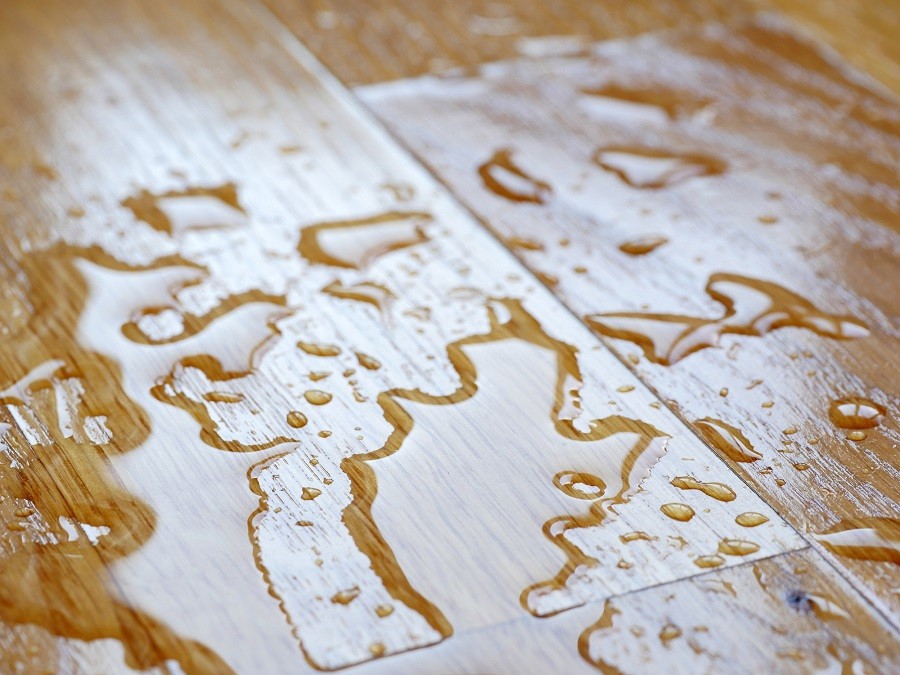Can Pool Water Chlorine Hurt Your Floors?

Avoid water damage to your floors as you take kids to the pool on a hot day . Sure it is as fun-filled of a summer activity as they come. It’s even better, however, if you have a pool at home. No fuss packing a bag, traveling or dealing with a crowded pool. What’s not to love?
There is one small problem, however. Kids running in and out of the house to grab a snack or go to the bathroom are going to be tracking chlorinated pool water in with them. Chlorine in pools keeps it clean of bacteria and other hazards but also contains many of the same elements as common household bleach.
Although the chlorine in pools is diluted by the water, concentrated amounts of chlorine from drips and exposure over time can damage certain floors the same way household bleach can.
Water Damage to Hardwood Caused by Chlorine
Further, too much water on the surface of hardwood can be absorbed into the grain over a short period of time and distort the texture, color or shape of the boards.
Being alert and wiping up pool water trails and puddles quickly before they linger and soak is important, but the best approach is to be proactive if your hardwood is subjected to ‘pool water traffic’. Place plenty of cloth or felt backed mats or small rugs in between the pool and the door so swimmers can dry all the way off before going indoors. Plastic-, vinyl- or rubber-backed area rugs or mats are not recommended.
Chlorine on Carpet
Although repeated or excessive exposure to chlorine can be harmful to carpeting it is not a common problem as the chlorine is very diluted in pool water. In some instances, chlorine can fade or completely alter the dyes in certain carpet types.
The corrosive nature of chlorine can also damage fibers, weaken them, and cause them to ‘loosen’ from the backing after routine cleanings. But, again, this would only be expected where there is repeated exposure to chlorine over time and with certain carpet dye methods.
Chlorine on Tile and Stone
Tile and stone are by far the best surfaces to feature in areas around and adjacent to the pool area where foot traffic will occur. Little or no absorption into the tile surface, no discoloration, simply wipe up any water spills and trails and you are set. Sometimes grout in dark or rich colors can be affected by chlorine over time. In these cases, an epoxy grout sealant applied to the grout may prolong the life of the color. Light-colored grouts are less of a concern.
Consider including an indoor tiled entryway at the primary doorway from the pool area to indoors. This gives you some extra protection and one last place swimmers can towel and dry off before running through the house trailing pool water.
Chlorine on Laminate
Laminate flooring will react similarly to chlorine and pool water if too much is left for too long. The good news is that just in the last couple years top laminate manufacturers are now offering water-resistance features and warranties on their products.
And they’re seriously gorgeous: Mannington’s Restoration Collection, Shaw’s Repel, and Mohawk’s RevWood are all excellent candidates for areas that may have some exposure to water. These types of products would be an excellent choice for areas between the pool, the door and the rest of your home.
Need help finding the best flooring? Call 317-879-TISH (8474) or schedule a free, in-home consultation on our site. We’ll bring samples to you!

